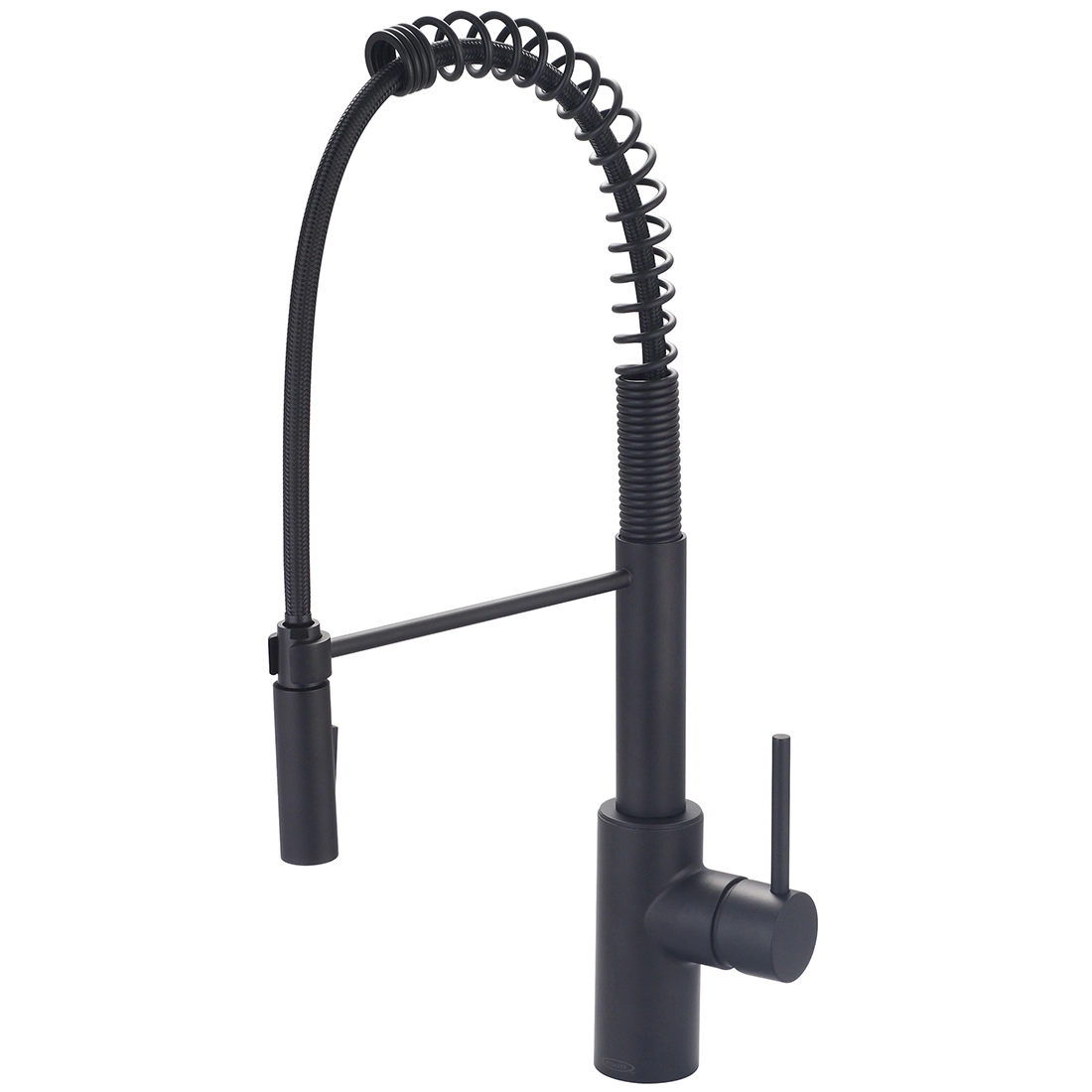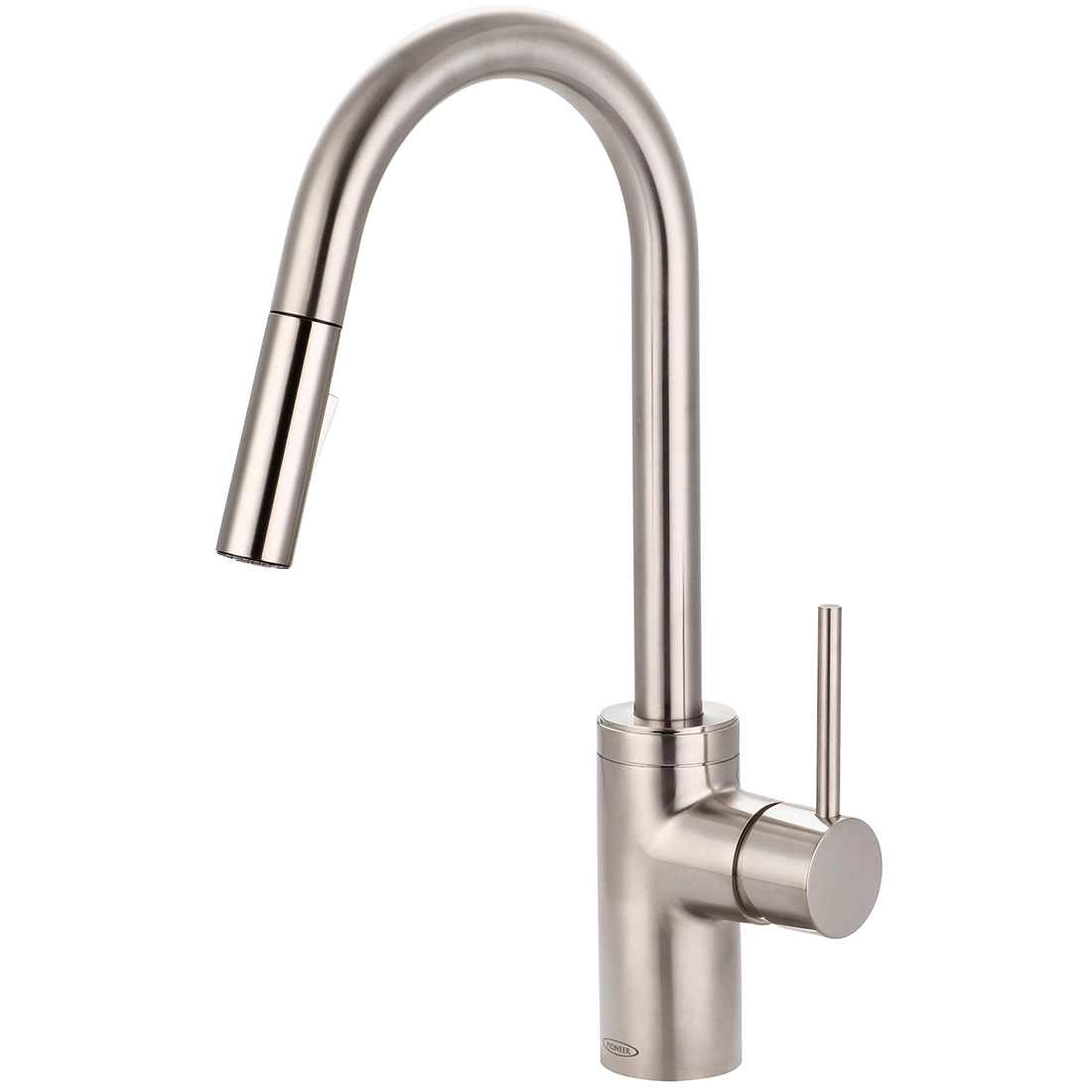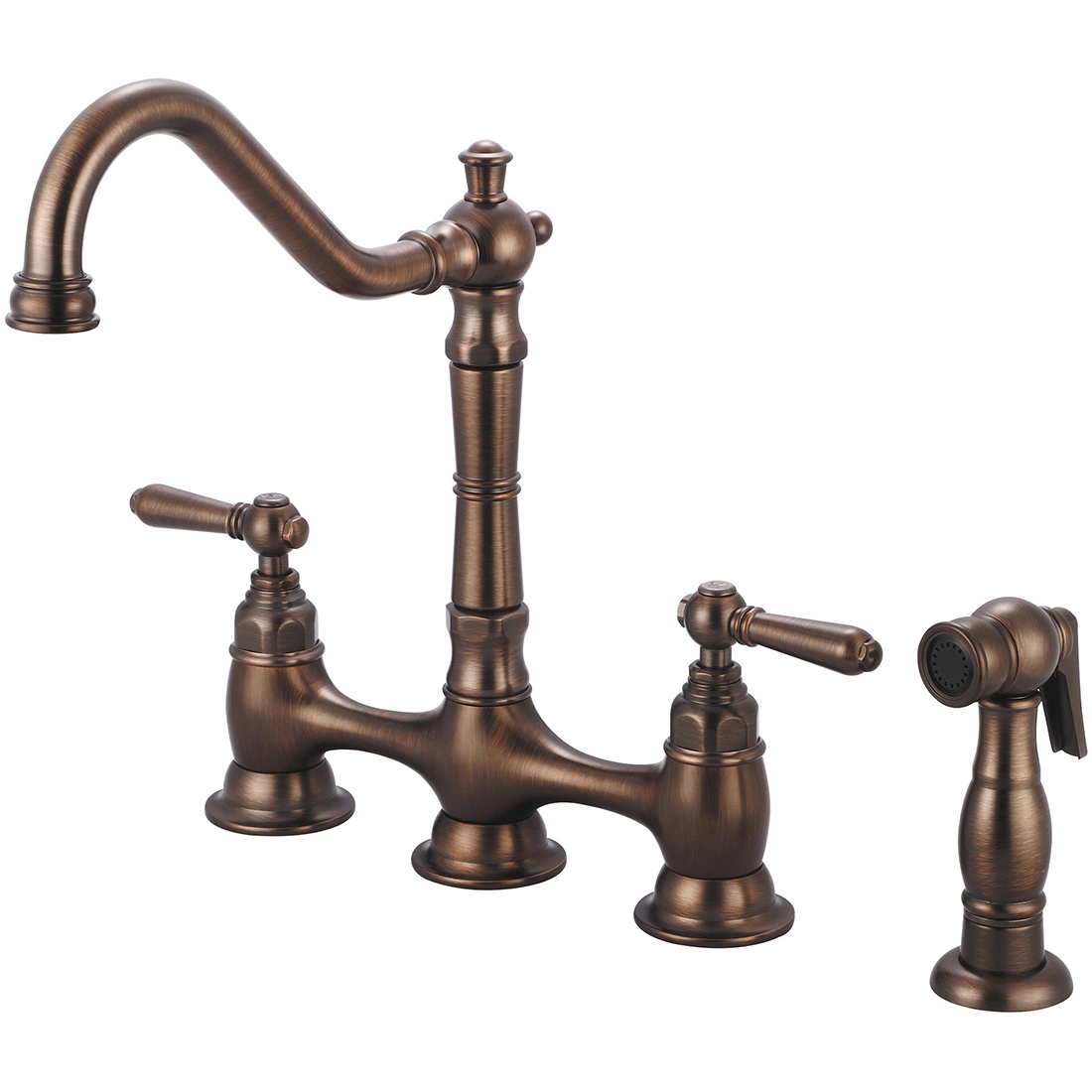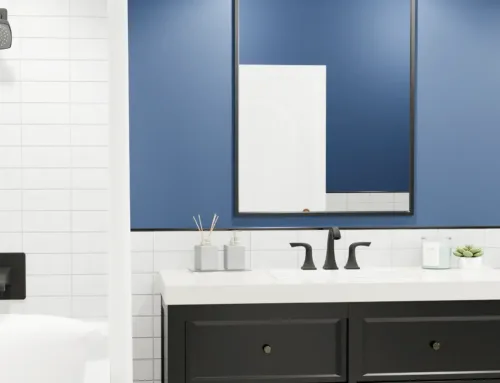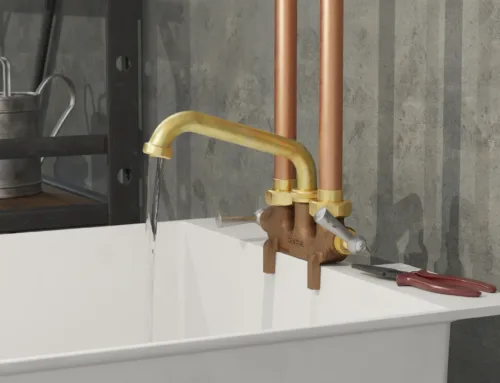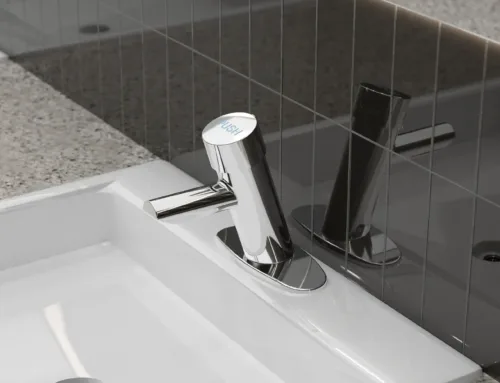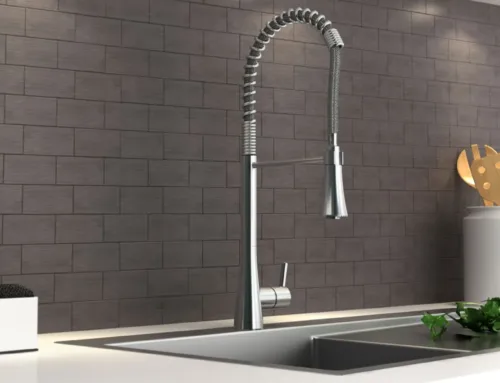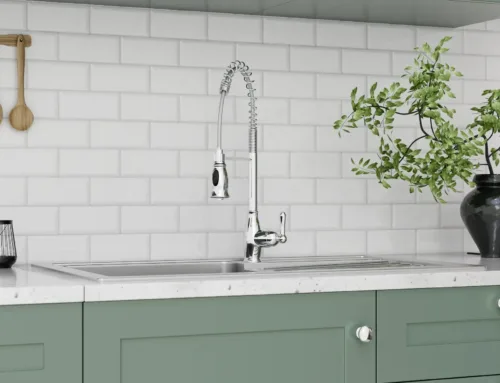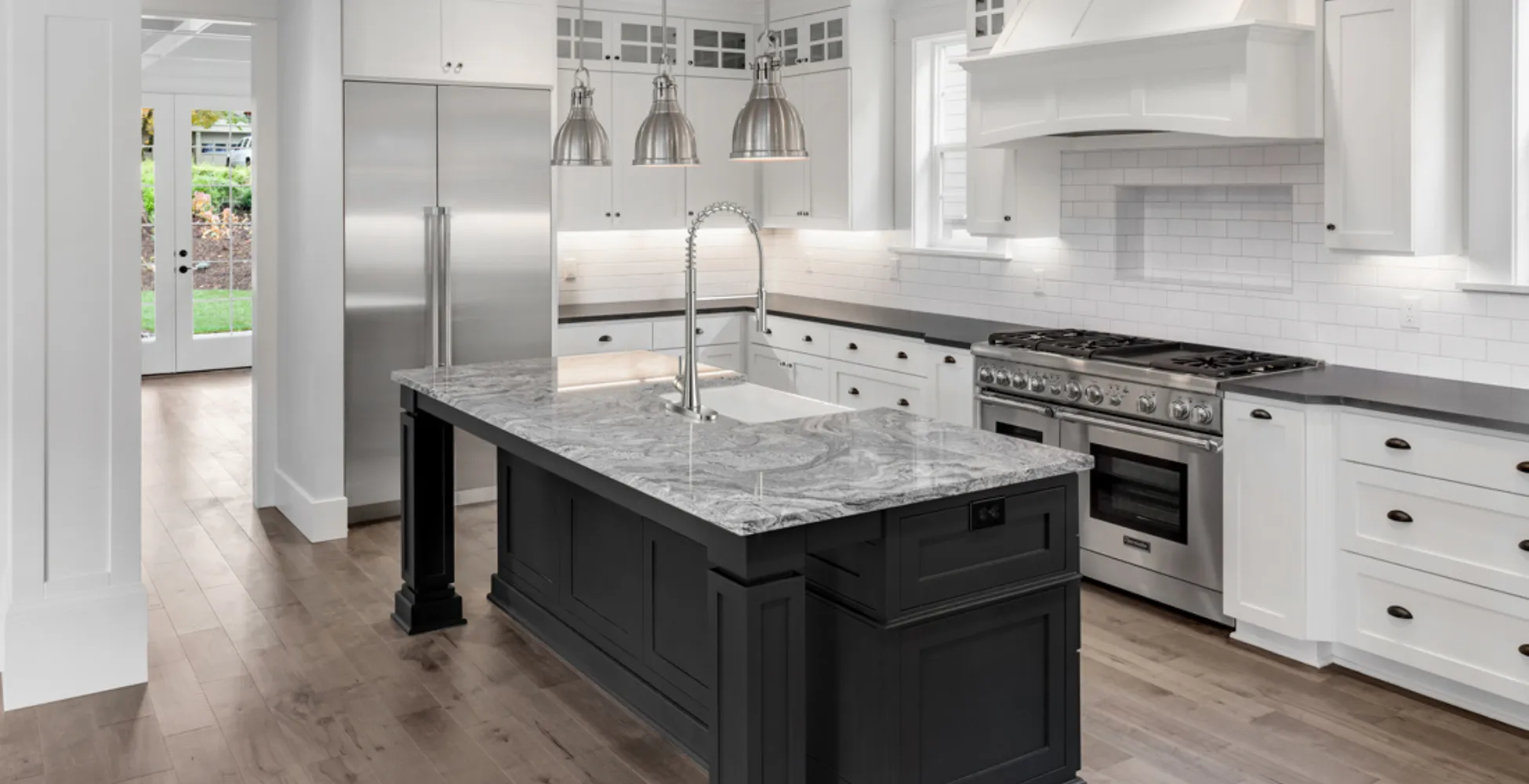
The Evolution of Kitchen Islands: From Functional to Focal Point
It’s natural to want to interact with guests and family members while preparing a meal, so it’s surprising (to this author, at least) that kitchen islands haven’t always been around to make this easy. But, they have been a part of household life for longer than you may imagine. Today we’ll take a trip through time to see the first kitchen islands in Europe’s castles, then journey forward for an overview of their evolution and place in modern kitchens. The island’s rise to a ‘must-have’ in today’s kitchen wasn’t necessarily a quick or easy one. Read on for a brief history of the kitchen island – where it came from and how it landed right in the middle of family life as a focal point in the kitchens of single-family homes and multifamily buildings across the globe today.
Once Upon a Time in the Kitchen
In the village of Castle Wynd in Scotland, Stirling Castle majestically watches over the surrounding landscape. Early historians first mentioned the castle in 1100, although its true build date is unknown. The kitchen of the castle was typical of any large household in the time period, featuring a fireplace large enough to fit several people standing upright and more than one work table for preparing meals. These large, sturdy wooden tables were the first kitchen islands; they served a functional purpose, but it’s safe to say that quite a bit of socializing also happened during meal preparation. Those who worked in the kitchen needed to make meals for hundreds of people at a time, so theirs was a full-time position in the household. Even smaller kitchens in cottages around the region had some sort of work surface for meal prep, if there was enough room. These small tables were the precursors to kitchen countertops.
When single-family homes expanded in size, and privately owned country houses and castle households dwindled, the focus in the kitchen turned to from making meals for hundreds to preventing house fires, an ever-present problem and one that originated largely in the kitchen. Out of necessity, rooms were sectioned off from the rest of the house with heavy, fire-resistant doors. Plus, kitchens still weren’t large enough to house a work table. Gradually though, this changed, and in the 1940s, those with enough money to enlarge their home wanted more table space in the kitchen. By the 70s, especially with the popularity of Chef Julia Child’s popular television show which featured her chatting and cooking behind a kitchen island on-set, well-off home chefs wanted a kitchen island. Why? They wanted to avoid isolation while cooking, especially when guests were over. As home fire prevention gained ground with smoke detectors and small fire extinguishers, the fire risk was greatly reduced and opening the kitchen up to the rest of the house was now possible. The modern open layout of today’s single-family homes and shortly thereafter, multifamily housing, became mainstream. To visually separate a kitchen from the living room or dining room and also double kitchen workspace, the kitchen island solution made perfect sense in open layouts.
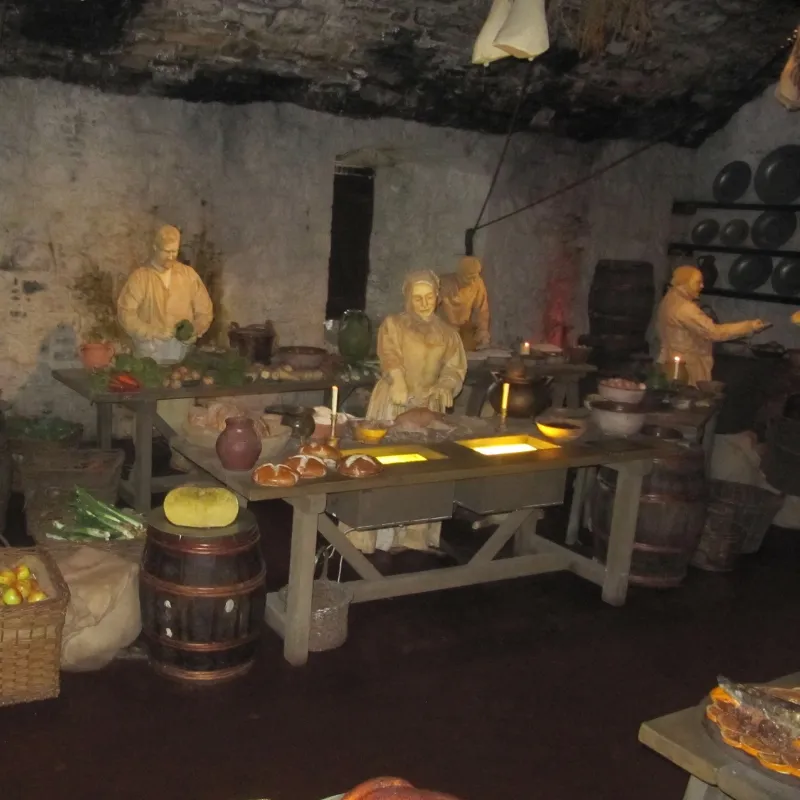
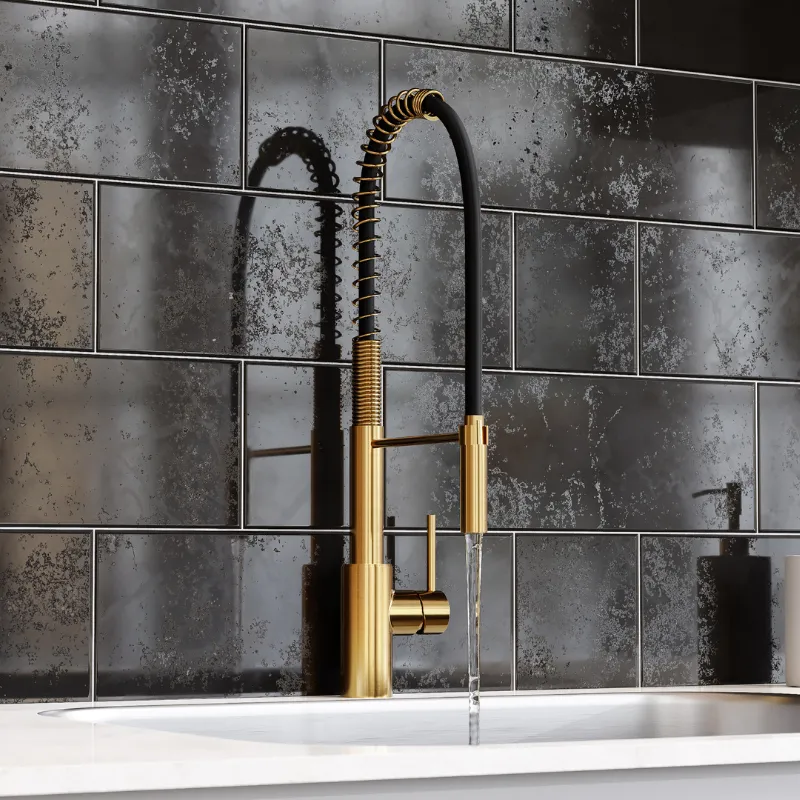
The Kitchen Island Sink and Faucet Focal Point
With the introduction (or re-introduction, depending on your viewpoint) of the kitchen island, the kitchen had the possibility of having a second sink. As kitchen islands were where the majority of vegetable chopping, mixing, etc. took place, having a quick-rinse sink topped the home chef’s island wish list. As the kitchen island was visible to all who entered the area, it needed to be beautiful, and have a well-designed faucet.
At first, smaller island sink faucets were simply duplicates of the main kitchen faucet, but commercial faucets quickly gained popularity in this role. Soon, though, designers began to notice that the kitchen island was a design opportunity. The island is often large and nearly always the first item that catches the eye when walking into an open kitchen layout with an island. Why spend the money on a gorgeous quartz, granite, Silestone, etc. island countertop without planning an equally beautiful faucet to sit atop it? For a classic-meets-modern statement piece, The Americana Pioneer Two Handle Kitchen Bridge Faucet 2AM510, delivers timeless style and bold functionality atop any showpiece island. The sink in an island became the main sink in smaller kitchens and the secondary small sink (think butler’s sink) gradually became as large as the main sink in large kitchen designs. Faucets for islands grew in size too. Today finding well-designed commercial faucets worthy of Viking appliances (and similar) gracing a mid-to-high end kitchen island is commonplace, and often expected.
A large, commercial-grade faucet with a spring-loaded hose that reaches much farther than ever before (to match the growing width of a standard island) is often the best faucet for the kitchen island sink. One of Pioneer’s most popular (for a very good reason) commercial-grade kitchen faucets for home use is the Motegi Collection Pioneer Single-Handle Pre-Rinse Pull-Down Kitchen Faucet, Model# 2MT270. Not only is it a good value, but it’s undeniably ready for the spotlight a kitchen island provides.
In Conclusion
From castles to homes, the kitchen island’s journey is a fascinating one. The kitchen island (and its faucet and sink) is now the most sought-after part of a modern kitchen. Including a kitchen island in layouts (if at all possible) is a must, in both multifamily buildings and in single-family homes. Also, consider adding an island to common-area kitchens in complexes and in office kitchens for a guaranteed selling point!
Pioneer, Olympia and Central Brass
As a trusted supplier of faucets and fixtures for over 100 years, Pioneer, Central Brass, and Olympia are here for you. Embrace the benefits of quality, availability, and speed by partnering with Pioneer, and enjoy the peace of mind that comes with knowing your project is in good hands. Transform your project or home with these beautiful and exceptionally durable faucets and accessories. All are backed by a best-in-the-industry warranty, are easy to install, and will stand the test of time.
We’ll Save You Money and Time
There are many ways to the same destination. This saying applies to multifamily housing builds just as much as to anything else in life. The ultimate goal is save as much money as possible while delivering a great finished project – that’s simply showing smart business sense. But, finding a one-off deal or sacrificing quality isn’t the only way to get a healthy ROI. We have a better way.
Pioneer works with professionals every day to develop specification packages and plans that save our valued partners both time and money, sometimes in surprising ways. It’s our goal to ensure your project meets or exceeds its expected outcome. We want to get to know you and your company and show you how we can save you money. Please reach out via our website form or call us at (800) 338-9468.



